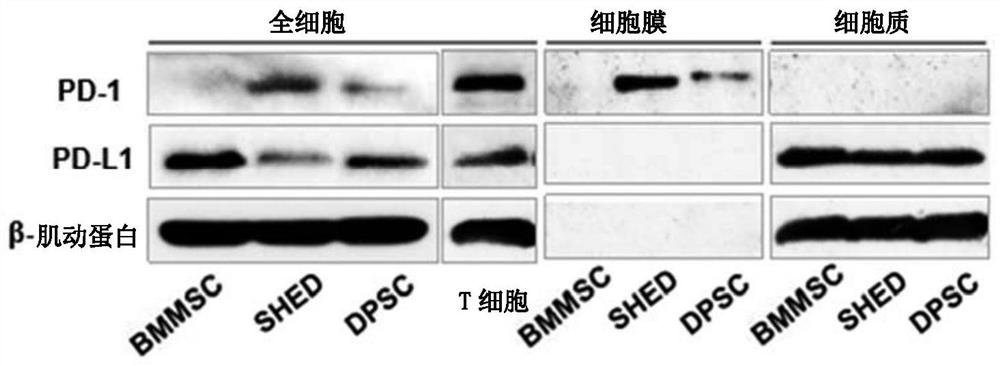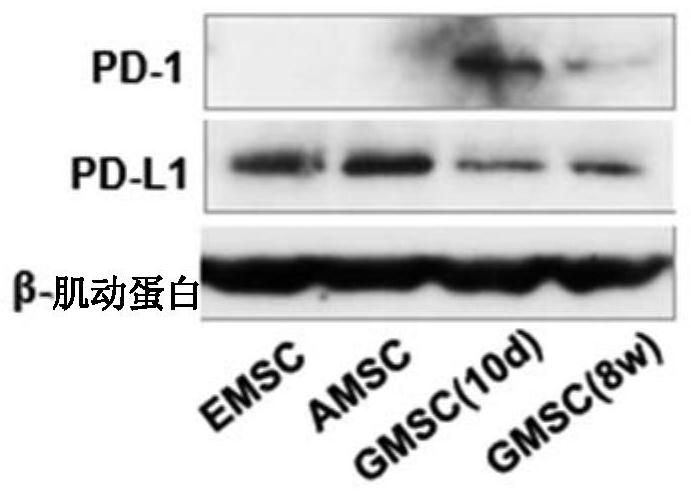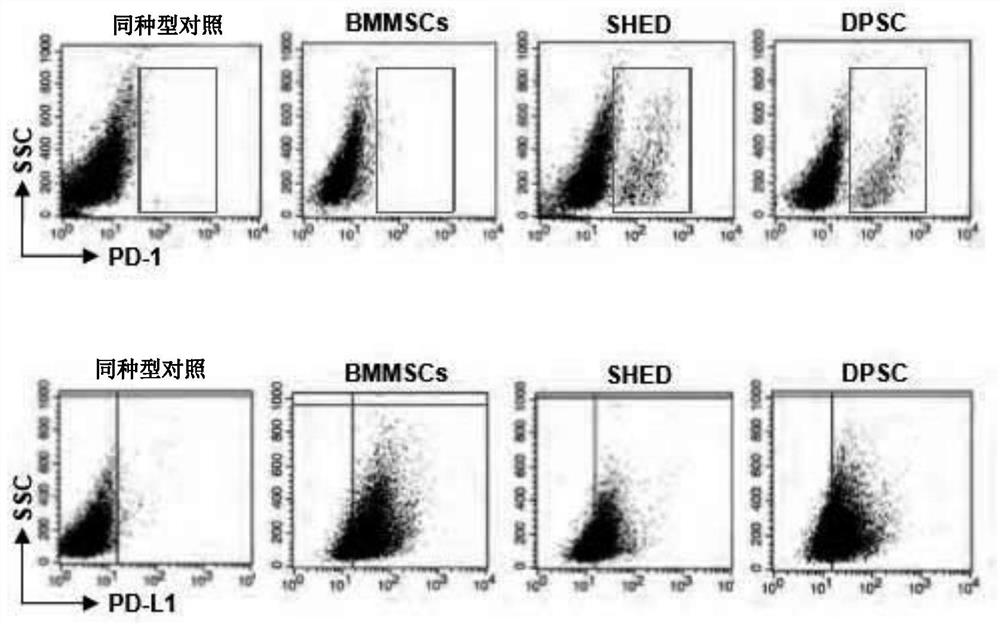Stem cells specifically expressing PD-1, their identification and isolation methods and uses
A technology of PD-1 and stem cells, applied in the field of stem cells, can solve the problems of identifying and isolating stem cells with high stemness, lack of tissue-specific markers, and not found
- Summary
- Abstract
- Description
- Claims
- Application Information
AI Technical Summary
Problems solved by technology
Method used
Image
Examples
Embodiment 1
[0093] Example 1. Isolation and cultivation of stem cells from different sources
[0094] 1. Isolation and culture of SHED and DPSC
[0095] (1) Select and collect deciduous teeth and third molars of healthy subjects (requiring no history of periodontal disease and dental caries), rinse with PBS (phosphate buffered saline) buffer containing 100kU / L penicillin and 100mg / L streptomycin;
[0096] (2) The tooth is cut open, and the pulp tissue is extracted;
[0097] (3) Wash the pulp tissue with L-DMEM medium, centrifuge at 500-700g for 5 minutes, and discard the supernatant;
[0098] (4) Mix the tissue block and the medium according to the volume ratio of 2-3:1, inoculate them into a cell culture dish, and cultivate them in an incubator; the medium is a special serum-free medium for MSC;
[0099] (5) Change the medium every 3 days, and subculture when the cells reach about 80% fusion; the subculture medium is a serum-free medium specially used for MSC.
[0100] 2. Isolation ...
Embodiment 2
[0107] Example 2. Isolation and cultivation of stem cells from different sources
[0108] Mesenchymal stem cells are an important member of the stem cell family, derived from the mesoderm and ectoderm in the early stages of development, and exist in a variety of organs and tissues, including bone marrow, umbilical cord, adipose tissue, skeletal muscle, and oral cavity. Bone marrow stem cells (BMMSCs) are a type of mesenchymal stem cell often used for transplantation, mainly derived from bone marrow. Dental pulp tissue-derived mesenchymal stem cells (MSC-DP) is a neural crest-derived stem cell population with high proliferative ability, which can be isolated from the pulp of exfoliated deciduous teeth or permanent teeth.
[0109] 1. Human exfoliated deciduous tooth pulp stem cells (SHED) and adult dental pulp stem cells (DPSC)
[0110] (1) Collect the pulp tissues of people's retained incisors (deciduous teeth) and third molars (permanent teeth) respectively, and wash them r...
Embodiment 3
[0118] Example 3. Identification of osteogenic and adipogenic induction and odontogenic / osteogenic differentiation of stem cells from different sources
[0119] Osteogenic induction: 2 mM β-glycerophosphate (Sigma-Aldrich), 100 μM 2-phosphate ascorbic acid and 10 nM dexamethasone (Sigma-Aldrich) were added to the medium for osteogenic induction. After four weeks, mineralized nodule formation was observed by staining the cultures with mineralized alizarin red.
[0120] Microscopic observation showed that the cultured stem cells were successfully differentiated into osteoblasts.
[0121] Adipogenic induction: 500 nM xanthine (Sigma-Aldrich), 60 μM indomethacin (Sigma-Aldrich), 500 nM cortisol (Sigma-Aldrich), 10 μg / ml insulin (Sigma-Aldrich) and 100 μM 2-phosphate ascorbic acid Add to growth medium for adipogenic induction. One week later, positive cells were observed under a microscope by staining the cultured cells with Oil Red O (Sigma Aldrich).
[0122]Microscopic obser...
PUM
 Login to View More
Login to View More Abstract
Description
Claims
Application Information
 Login to View More
Login to View More - R&D
- Intellectual Property
- Life Sciences
- Materials
- Tech Scout
- Unparalleled Data Quality
- Higher Quality Content
- 60% Fewer Hallucinations
Browse by: Latest US Patents, China's latest patents, Technical Efficacy Thesaurus, Application Domain, Technology Topic, Popular Technical Reports.
© 2025 PatSnap. All rights reserved.Legal|Privacy policy|Modern Slavery Act Transparency Statement|Sitemap|About US| Contact US: help@patsnap.com



